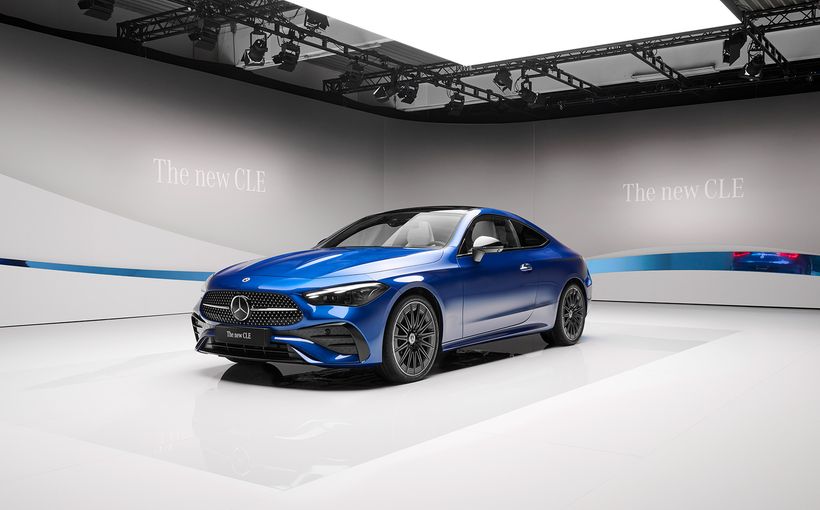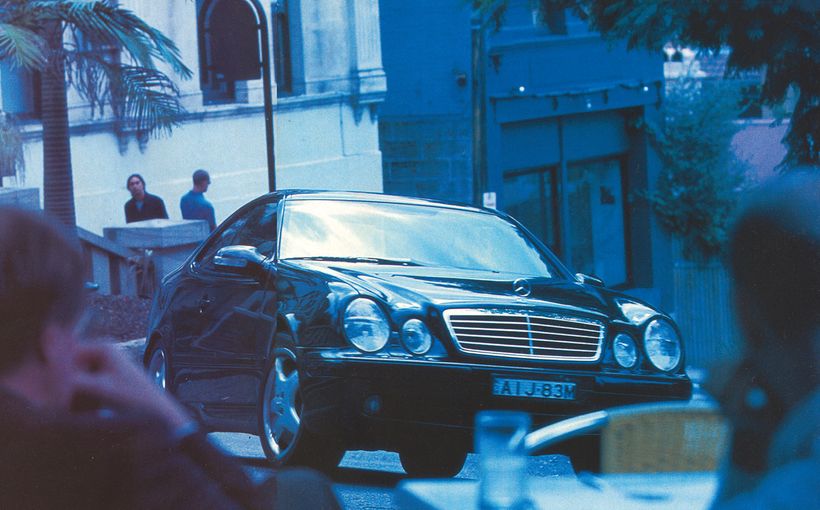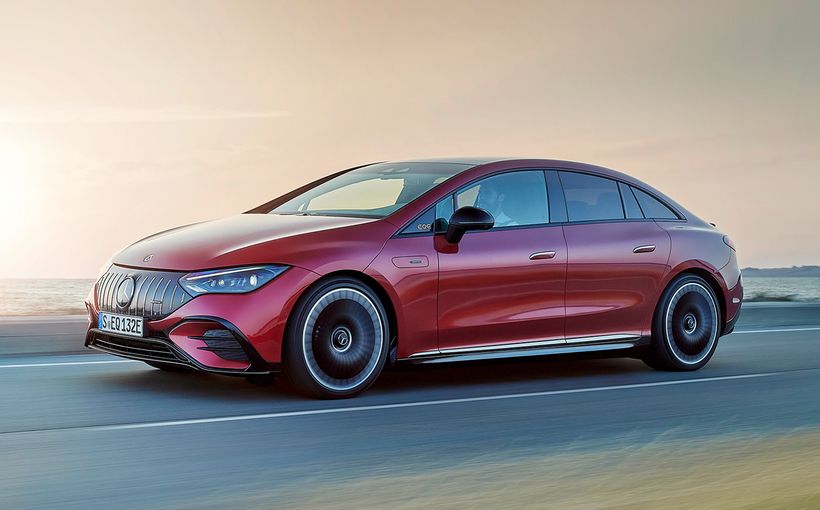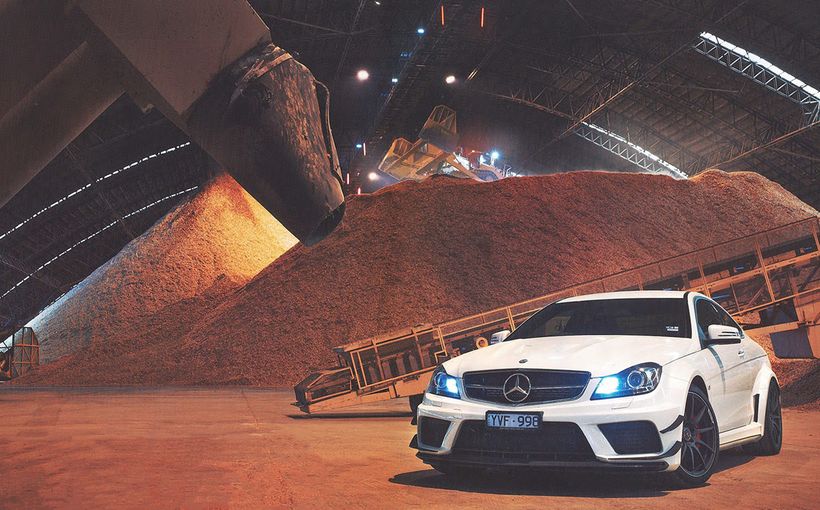Mercedes-Benz 280E: London to Sydney efficiency with a capital E

In pre-war and early post-war grand prix and sports car racing, Mercedes-Benz was renowned for the engineering and organisational firepower behind the success of its legendary ‘Silver Arrows’. More than two decades later, the Stuttgart firm proved none of that efficiency had been lost with an emphatic victory for its 280E sedan in the 1977 London to Sydney Rally.
The famous German marque not only won the event, but the winning car driven by 1968 London to Sydney Marathon winner Andrew Cowan led home another 280E to record a dominant 1-2. This historic victory marked the beginning of a new era of motor sport involvement for Mercedes-Benz through rallying, campaigning brutish V8-powered SLC coupes in South America and Africa for the remainder of the decade with great success.
Although Cowan’s winning car was one of six identical 280E sedans prepared and supported by the factory, none were official ‘works’ entries. This was a smart approach by M-B given the company’s long absence from motor sport. If the 280Es did not win, there would be no corporate loss of face because the cars were entered as individual teams. If they won, Mercedes-Benz could bask in its brilliance as a perfectly planned factory effort!

The second London to Sydney epic, held a decade after the first, was the longest car rally in history and rightly billed as the world’s toughest, because it was significantly longer and more demanding than the original. In fact, it was almost twice the length, covering more than 30,000km across three continents (Europe, Asia and Australia), including three sea crossings.
How Mercedes-Benz all but guaranteed victory is a story of meticulous planning, in everything from vehicle selection, pre-event testing and preparation to event logistics so surgical in detail that every potential contingency could be anticipated and efficiently dealt with. Clearly, a large part of this victory was achieved before the event even started.

280E the chosen one
The London to Sydney provided the perfect platform to promote the superb engineering of its new mid-sized W123 series released in 1976. The pride of the fleet was the sporty 280E model, with a lusty 2.8 litre inline six featuring a typically robust seven-bearing crankshaft, DOHC 12-valve aluminium head and Bosch mechanical fuel injection (or Einspritzung hence the letter E). Silky smooth and free-revving, the 280E’s howling six produced 175bhp (130kW) at 6000rpm and 169ft/lbs (229Nm) of torque at 4500rpm.
With a kerb weight of around 1460kg, the 280E was ideal for such an event given that it could easily accommodate a crew of three plus their equipment and a pile of spares in its immensely strong unitary body. Supple four-coil independent suspension and powerful disc brakes ensured the 280E could cover vast distances over rugged terrain in great comfort.
‘Safety in numbers’ is a strategy often adopted by manufacturers wanting to give themselves the best chance of victory in endurance events. Given the unprecedented distance of the 1977 London to Sydney, Mercedes-Benz chose to prepare six 280E sedans at a reported cost of $40,000 each (about $220,000 in today’s money) which were allocated to different teams backed by either major corporate sponsorships or private funding.
They were all given substantial factory support in the event from start to finish, under the direction of project manager Erich Waxenberger. The six 280E sedans and crews were as follows:
No.27: Herbert Kleint/Günter Klapproth/Harry Vormbruck (Herbert Kleint, private entry)
No.33: Andrew Cowan/Colin Malkin/Mike Broad (Rank Organisation team)
No.37: Joachim Warmbold/Jean Todt/Hans Willemsen (Joachim Warmbold, private entry)
No.49: Anthony Fowkes/Peter O’Gorman (Johnson Rally Wax team)
No.59: Alfred Kling/Klaus Kaiser/Jörg Leininger (Alfred Kling, private entry)
No.80: Wolfgang Mauch/José Dolhem (Wolfgang Mauch, private entry)

As Bill Tuckey noted in his wonderful book From Redex to Repco, it was remarkable that six of these cars could be plucked from the production line “at a time when the waiting list in Germany for a (280E) was over two years long and dealers displayed names of customers in order on the waiting list in their showrooms.”
Waxenberger followed the same proven path in rally vehicle preparation employed in the past, which resulted in numerous victories for the 220SE and 300SE ‘Finny’ sedans in the late 1950s and early ‘60s. Eight different Mercedes-Benz test departments were involved in readying the 280E for rally use.
To standardise servicing requirements all cars were LHD, which the two British crews quickly adapted to. The standard 14-inch diameter wheels were replaced with larger 15s and heavy-duty shocks and long-travel coils, both available as factory options, raised the cars’ ground clearance by 35mm. Other suspension components, including the rear suspension’s semi-trailing arms were reinforced, after testing standard cars to destruction at the British Army’s tank-testing facility in Bagshot.
The standard 280E transmissions were replaced with stronger four-speed manual gearboxes used in the V8-powered W116 S-Class and the standard bumper bars were replaced with robust but lightweight aluminium tracks, which could be quickly removed and placed under the tyres if the cars became stuck in soft sand. Underbody armour was fitted to protect drivetrain components along with mandatory safety gear including roll cages, multi-point seatbelt harnesses, fire extinguishers etc.

The quality of petrol supplied along the route was factored into the planning, with the engine ignition systems being modified to run on octane ratings as low as 82 RON. Each car also carried a canister of octane booster and was fitted with an auxiliary tank to allow high-octane fuel to be mixed with lower grade local petrol. However, as you’ll read later in this story, running these cars on anything other than premium quality high-octane fuel would only be required in the unlikely event of a logistical fault.
Each car was also equipped with a comprehensive inventory of spare parts, the latest navigational equipment and personal items for the crews including first aid kit, malaria drugs, insect repellent, water purification tablets, toilet paper and food, which would be replenished along the way.
This would occur at what Mercedes-Benz called its ‘rolling support points’ which covered the entire route, including bases in Milan, Trieste, Veria, Lamia, Athens, Istanbul, Ankara, Kayserie, Mus, Van, Tabris, Teheran, Yazd, Tabas, Fariman, Kandahar, Kabul, Lahore, Delhi, Ajmer, Baroda, Bombay, Belgaum, Bangalore, Madras, Penang, Singapore, Perth, Alice Springs, Adelaide and Melbourne.
Additional back-up was provided by support vehicles accompanying the rally. Mercedes-Benz provided a 280E as a service vehicle from Persia to India driven by Waxenberger. In Australia, where the rally had to cover vast outback stages, Mercedes-Benz even brought in a Unimog 4x4 truck.

1977 Singapore Airlines London to Sydney Rally
The second running of the London to Sydney was held, fittingly, a decade after the first. It was also timed to celebrate naming rights sponsor Singapore Airlines’ 30 years of operation, starting at London’s Covent Garden on August 13 and finishing at Sydney’s Opera House on September 28.
The starting field of 69 cars featured works-assisted teams from Mercedes-Benz, Peugeot, Citroen and Fiat. From a total list of 191 crew members there were 62 Aussies in a variety of vehicles including Evan Green in a Range Rover, Hans Tholstrup in a Mini Moke, Ross Dunkerton, Roger Bonhomme, Bob Holden and Bob Watson in a fleet of Peugeot 504TIs and 1974 World Cup Rally winner Jim Reddiex in a Citroen CX2400 to name a few.
The first 12 days spanned 11 countries through Europe, Turkey and the Middle East to India and completion of the first leg. It was in Greece, on a very rough, rock-strewn special stage before Athens, that Mercedes-Benz rivals got their first demonstration of the Teutonic efficiency which would all but ensure victory.

National rally champion Bob Watson, who with Ross Dunkerton and Roger Bonhomme in a Peugeot 504 were the first Aussies home in fifth place, recalled this moment in his autobiography ‘In Control’.
“During this stage, event favourite Andrew Cowan ran off the road in his Mercedes, bending the sump guard which then jammed the steering. Cowan struggled to the end of the stage and the Mercedes team manager Waxenberger made notes of the problem. The next day, redesigned sump guards had been made at the factory in Germany, air-freighted to Greece and fitted to all the Mercedes cars. This was the calibre of organisation we were fighting.
“We also noted that the Mercedes team cars always refuelled from a tanker, never from roadside pumps. This continued for the entire event, a huge advantage when some of the pump fuel available in Turkey, Pakistan and India was little better than kerosene.”

Seven of the original 69 cars had withdrawn by the time the field reached Iran, with Warmbold’s Mercedes leading into the nation’s capital Teheran despite a damaged shock absorber. Polish star Sobieslaw Zasada in his Porsche 911 Carrera was second ahead of the two British-crewed 280Es with Fowkes leading Cowan; the patient Scot sitting back a little as he felt the pace was too hot, too early for such a long event.
“The pace was indeed furious – a 180km/h sprint across some of the driest, most boulder-strewn and rocky tracks in the world, Iran’s Great Kavir Desert,” wrote Aussie motoring journo David Robertson in Wheels magazine.
“Zasada in the Porsche was going quickly, but not too hard. He had a few repairs to do to his Carrera’s front suspension after some rough roads in Turkey and he knew he had to take care. But his car was simply quicker and Warmbold was asking the Mercedes for everything it had.
“It had a lot to give, but not enough. A rear shock absorber went about 350 kilometres from Kabul, Afghanistan. The German pressed on regardless and the wild movements at the rear of the car pulled the driveshaft from its socket. He was too tired, apparently, to try to replace it; in fact gave it all away in the mistaken belief that the shaft had broken completely.”

As Bill Tuckey noted, this triggered another demonstration of Stuttgart’s unwavering commitment to maintaining its product superiority, with what appeared to be a ‘win at all costs’ approach.
“When Warmbold failed to arrive in Kabul, competitions manager Waxenberger drove down the road and found him. He raced back to town, saw his remaining cars on their way and found a helicopter to fly out to uplift the broken car and bring it back to town. While this was going on he arranged to get the car on the first Boeing 747 to Europe.
“Three days later in Stuttgart the car was repaired and tested and on another Jumbo to Penang. Then it was air-freighted to Perth, out of the rally, but for Waxenberger’s use across Australia as a source of special spare parts, if needed. It reportedly cost $40,000 for this mammoth effort.”
As the field left Kabul bound for India, Zasada’s Porsche was leading three of the Mercs (Fowkes, Cowan and Kling). By the time they reached Madras on India’s southern coast, the original field of 69 starters had dropped below 50. Like most competitors, Cowan had caught the dreaded ‘Delhi Belly’ and was suffering chronic diarrhoea. There was speculation he may not be able to continue, but he soon recovered after leaving India.
The cars were loaded onto a ship bound for Penang and the second leg, which comprised an 800km route down the Malaysian peninsula to Singapore. This included two special stages through rubber plantations and an old mine site in which many cars lost their way, including leader Zasada who dropped to second.

After several days in Singapore, the surviving cars were shipped to Perth for the massive 13,000km third and final leg across Australia. Shipping problems delayed the start of the Australian leg by two days. However, as the finishing date in Sydney could not be moved, event organisers got the approval of teams to increase the average speeds and savagely cut the number of rest stops.
The nightmare result was 13,200 kilometres in just seven days and 16 hours – that’s more than 1,700 kms a day, or an average speed of 72 km/h for 184 hours! It was a fearful test of physical and mechanical endurance, across some of the toughest outback terrain imaginable.
From Perth the course headed north-east across the Great Victoria Desert to Uluru and Alice Springs, then north towards Katherine and west to Wave Hill before returning south through the Tanami Desert to the Alice, then via Coober Pedy onto Port Augusta and the Flinders Ranges to Adelaide.

“There were two more demonstrations of the Mercedes-Benz ‘win at all cost’ organisation as we battled our way through the rough and dusty Flinders Ranges,” Watson recalled. “There was a very long and loose sandy stretch to negotiate and off to the side watching our progress was a Mercedes Unimog all-terrain vehicle, placed there to pull out any of the Mercedes-Benz cars that got stuck. We made it through, but many of the other cars did not and had to dig themselves out while the exclusively Mercedes Unimog crew sat and watched.
“The same section had many gates, which according to normal rally practice must be left as they are found. All of the gates were shut, but strangely there was a person standing by each one. They were there solely to open and close the gates for the Mercedes cars, which would have saved them many minutes of delays.”
Zasada’s Porsche, in second place when the field left Perth, was hindered by broken shock absorbers and had dropped to third behind Cowan. The tenacious Scot’s patience soon paid off, as he took the lead from team-mate Fowkes after exhausted co-driver Peter O’Gorman (they were only a two-man crew remember) incurred time penalties for errors made when booking into the Alice Springs control.

Cowan maintained a vice-like grip on his lead as the field passed through Melbourne over the Snowy Mountains to Canberra, followed by a large north-east loop through outback NSW and Queensland to Brisbane, before heading south through Moree and the Hunter Valley to the finish at the Sydney Opera House.
Thousands of Sydneysiders gathered to welcome the field home, with Cowan and Fowkes scoring their famous 1-2. Another two of the six works-prepared 280Es finished sixth and eighth while the remaining pair retired. 47 of the original 69 starters were classified as finishers, but only 12 completed the entire course.
Winning the longest car rally in history was another testament to Mercedes-Benz' faultless preparation and planning. It was also a crushing demonstration of the durability and sporting qualities of its W123 series sedan, which in 280E specification proved to be a world beater.









